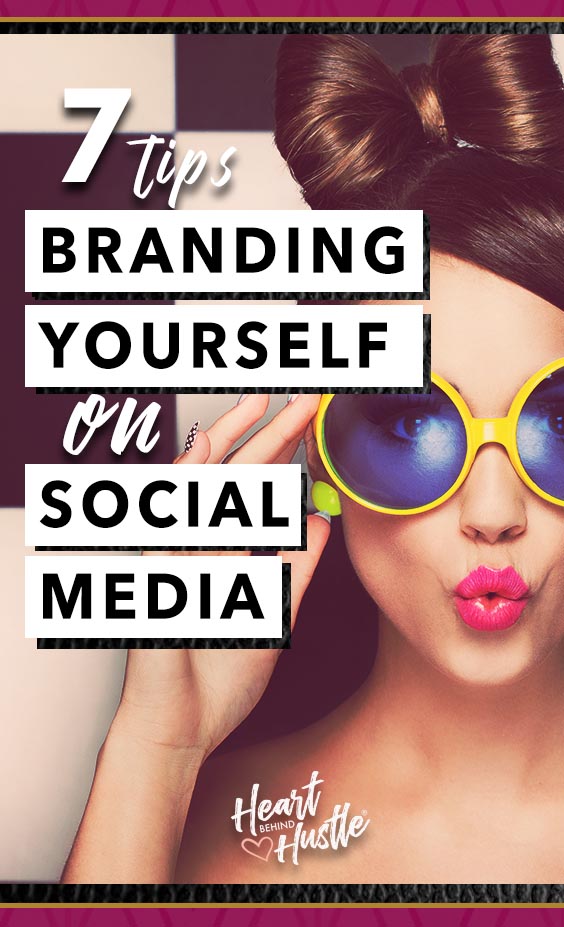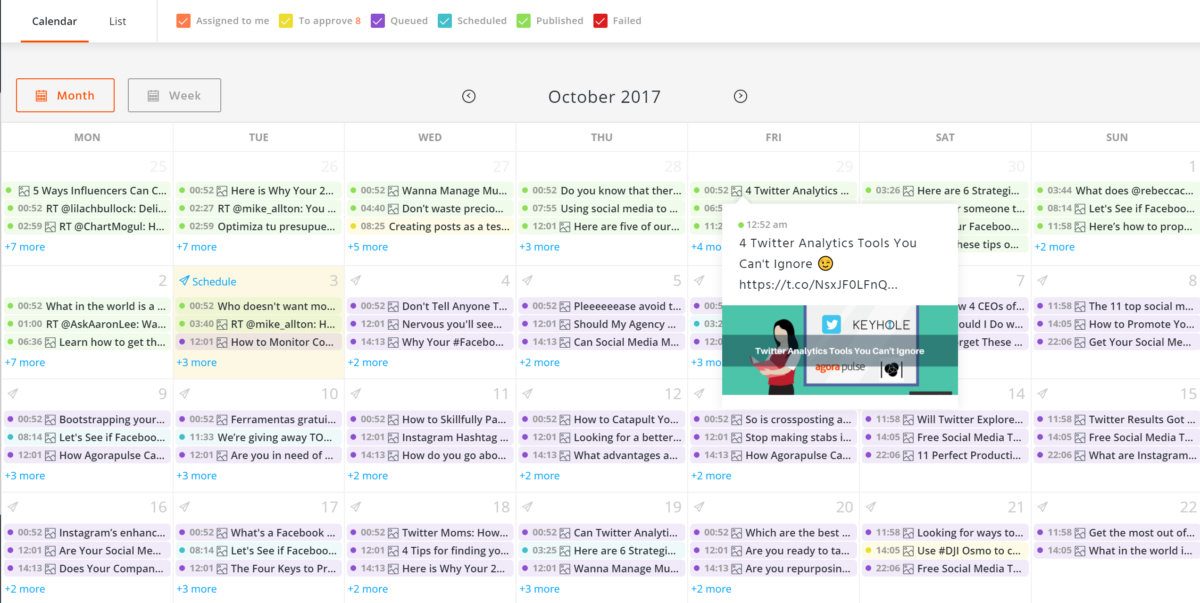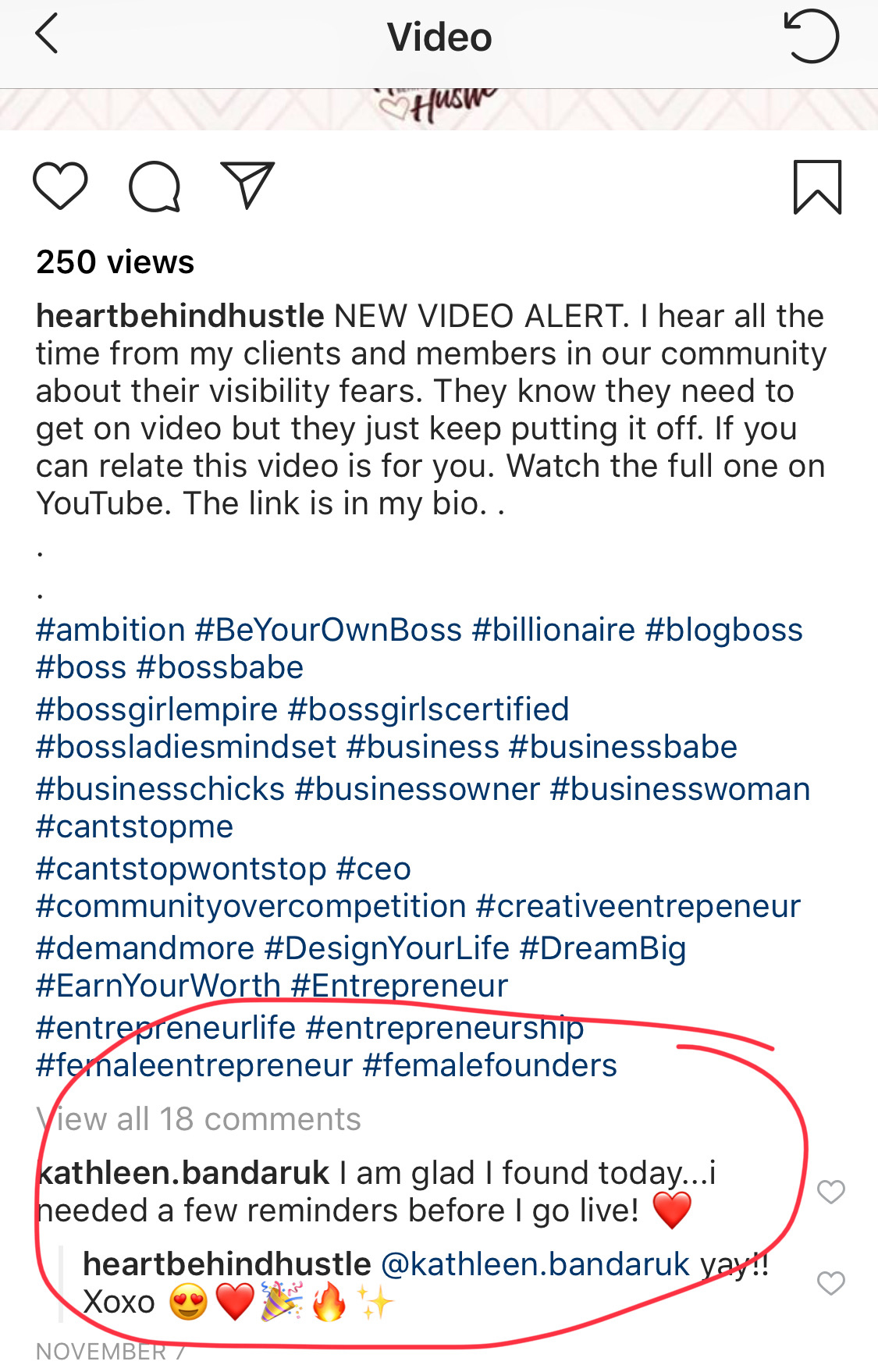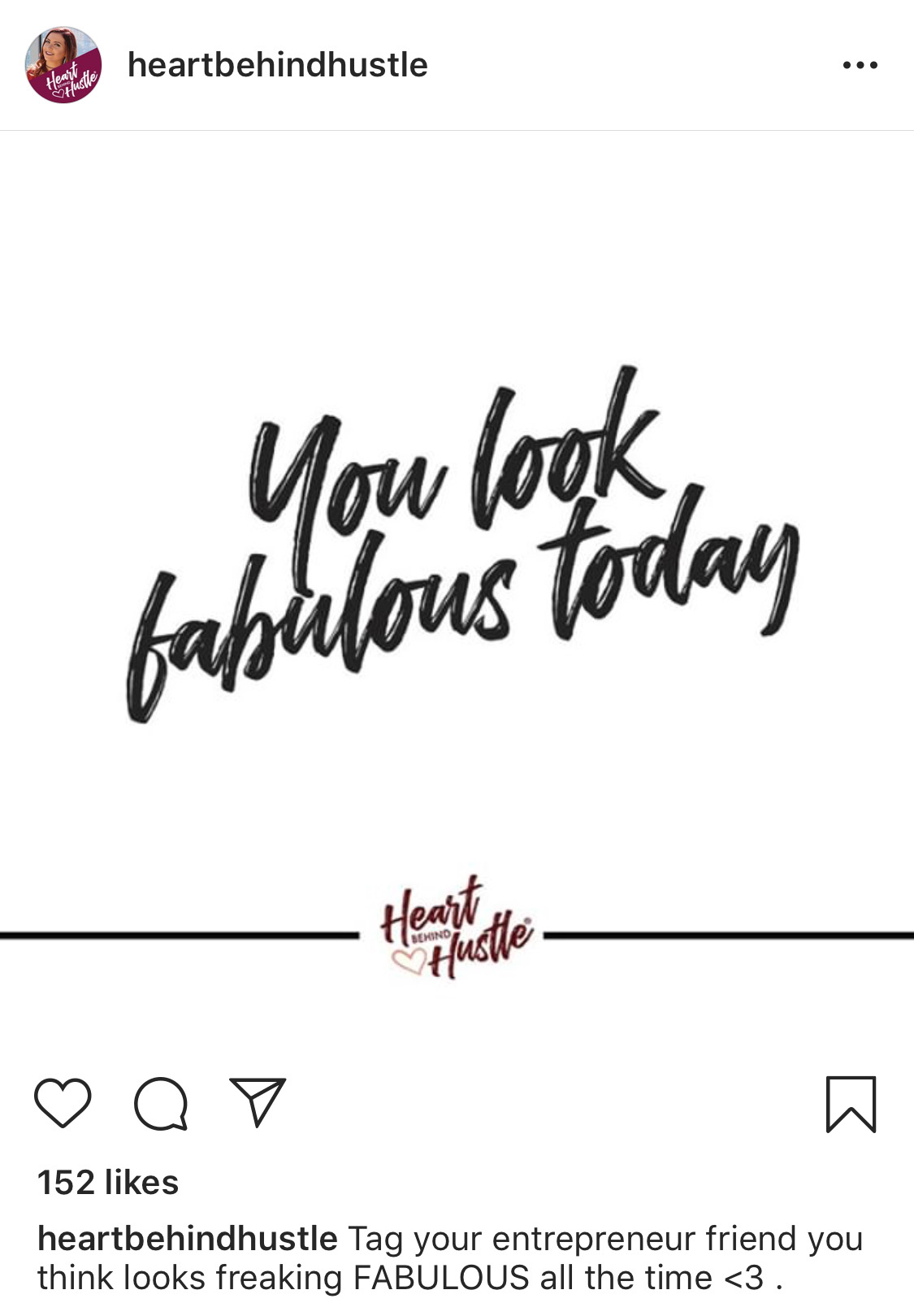Hey there amazing! Let’s talk about branding. And particularly, branding yourself on social media.
 When you hear about someone talking about a brand name, I’m betting a few things come to mind—the mermaid logo of Starbucks, the swoosh of Nike, the icon for Apple computers, and the distinctive white-on-red lettering of Coca-Cola.
When you hear about someone talking about a brand name, I’m betting a few things come to mind—the mermaid logo of Starbucks, the swoosh of Nike, the icon for Apple computers, and the distinctive white-on-red lettering of Coca-Cola.
But did you know there’s a brand even closer to you and more personal? YOU are a brand unto yourself.
Don’t believe me? Try this little experiment. Go online and Google yourself. (Don’t worry, we’ve all done it.) See what pops up when other people look for you. Now, just focus on the first page of results and ask yourself: “Is this what I want other people to think of when they think of me?”
Now, we’ve probably all heard about employers checking out your “digital footprint” before hiring someone. And we’re also familiar with those horror stories of people being denied jobs because of ill-advised posts they published on their social media.
But rather than shying away from platforms like Facebook, Twitter and Instagram, you should embrace them and find a way to step into graceful branding yourself on social media.
Let’s look at seven ways you can brand yourself on social media.
-
Define yourself
The first thing you need to do before you even venture online to create a social media account is to sit down and ask yourself, “Who am I? What makes me special?”
Grab a journal and just think about that then let it flow out of you. If you aren’t a “flowery” language type person, then just make a simple bullet list. But you really need to come up with three to five things that set you apart from the crowd and makes you stand out.
Just think about it—are you an excellent parent with your own unique brand of parenting?
Are you able to take complex ideas (let’s say renewable energy sources) and put them into simple terms that everyone can understand?
Are you detail-oriented so that nothing in a design, no matter how miniscule, escapes your watchful eye?
Can you quote every single episode of Friends five seconds before the cast says their lines?
You never know when any of this will be useful to creating content or establishing yourself as an online persona.
Why is this so important up front? Let’s look at the realities:
- The US. currently has a population of roughly 327 million people;
- Of those, 77% had a social media account in 2018;
Think about that for a minute. Almost 25 million people, just in the United States, have social media accounts. When you’re trying to stand out in a crowd and branding yourself on social media, it’s easier to do when the crowd is small. But you’re competing for attention with 25 million other people.
That’s a lot of people all “talking” at the same time on issues from politics to family to business to entertainment to religion. So, it’s imperative you find those few niches that make you stand out from the rest so people will want to follow you and hear what you have to say over the din of others.
-
Set up your social media accounts correctly
First, you don’t want to overextend yourself. There are dozens of social media platforms out there, but not all of them are worth your time and energy. You need to choose two or three platforms that really connect with your audience and what you want to do.
Currently, the top three platforms for social media are Facebook (2.2 billion users), YouTube (1.9 billion users) and Instagram (1 billion users). So, if it’s important to you to be current with a huge cross-section of the population, you should choose one of those listed.
You may also want to choose another “old standby” like Twitter. If you’re trying to brand yourself more to an executive-level clientele, then LinkedIn may be more of a platform for you. The choice is yours, but choose wisely.
I can’t stress this next part enough—when you choose a platform, you have to be consistent with your profile. You don’t want your profile on Facebook to say one thing while your Instagram account describes you totally differently.
It’s also important to make sure your profile pictures are the same for consistency’s sake. This is a way to create a visual brand, complete with a logo or trademark visual, that will do you a major service later on.
Another thing you need to do before setting up a new account is to delete your old social media accounts. This is a new way of looking at yourself. You don’t want any of the baggage of the “old brand” coming back. Start fresh and you will be much happier with the results. This is really important for branding yourself on social media.
Finally, make sure you’re consistent when it comes to your email that’s connected with each account. Today, many of us have multiple email accounts—one for work, one for personal, one even for signing up for things that you know will turn into spam. So make sure you use the same email account when you sign up so you don’t have to play catch-up with messages heading to multiple accounts.
-
Say hello to the world
Now that you’ve set up your account, it’s time for you to create a biography for your followers. This is where you really have to sell yourself. Go back to that list you made about what sets you apart from the rest of the crowd. Make sure you emphasize at least three of those points in your biography.
You’re going to want to start with a professional biography. What exactly is your job? Don’t be vague here. If you’re working in “sales” that could mean everything from handling multi-million dollar contracts to running a cash register at a department store. Be specific as to what avenue of sales you are active in (or marketing or design or whatever you do for a living).
Sell yourself with what makes you different! If you’re an author, have you been on the New York Times, USA Today or Amazon bestseller lists? If you’re a designer, have you won awards for your work? All of these details will help to showcase your talents and really hype your specialty as you focus on branding yourself on social media
Next, you can add in something personal about yourself. People love to think of a company as an individual instead of a faceless conglomerate. (Just look at how well it worked for KFC or Orville Redenbacher’s Popcorn.) Do the same here.
Showcase your own personality with information about your hobbies and “extracurricular activities.” Don’t be bland about it. If you like to hike, say that but also add in that your goal is to one day hike the Appalachian Trail. The more detail you can get, the better chances you have of humanizing yourself to your audience thereby adding to your brand on social media.
Let’s put in a quick warning though on sharing TOO much. Some people are naturally funny. But remember that humor doesn’t always translate well in written format. And some people may actually find your sense of humor off-putting or possibly insulting. Use humor sparingly in your personal descriptions. (Unless you’re a comic genius like Tina Fey or Jon Stewart.)
Finally, make sure your audience knows where else to find you. Your biography should include a way to be contacted. It should also include links to your other social media accounts so people can follow you across multiple platforms.
-
Post…and post…and post…
Let’s not sugar coat this: building a brand is a full-time job. That is, if you want to do it right and do it well. You can’t post something once a month to Twitter and Facebook and hope that’ll build you a following. It just isn’t going to happen.
In order to get a good following, you’re going to have to post new content and updates regularly. This means reposting some things that you run across on your own and want to pass along. But it also means creating your own content that will draw in followers.
You’re going to need a content plan for your profiles. I highly recommend getting one of several apps that helps with social media calendars and planning. But however you do this, count on trying to get at least one original content piece or post every week or so….at first. Once you get your feet wet, so to speak, you can start to expand and do a little more.
When you’re creating new content, be sure to be consistent.
You want to go back to what sets you apart from other people and make that the one area you post to. If your specialty niche is on graphic design for websites, you don’t want to post a blog on parenting tips or kitchen hacks. This is going to confuse your audience. Choose one general topic and write well about it instead of trying to do a little bit of everything.
Solid focus is key when branding yourself on social media.
-
..and engage…and engage…
You don’t have to burn yourself out, though, creating new content all the time. Instead, make sure you’re engaging yourself into conversations and feeds with other commentators and bloggers. These should be people who have already carefully crafted their brands, who you can actively repost and whose content you can engage with.
 Think about it this way: if you’re standing up on a pedestal shouting out your views all the time, you’re going to draw attention. And if that’s all you do, people are going to tire and move away. But if you actively engage other people in a back-and-forth discussion, you’re going to bring in more people who want to talk with you. Make it a conversation, not a stump speech.
Think about it this way: if you’re standing up on a pedestal shouting out your views all the time, you’re going to draw attention. And if that’s all you do, people are going to tire and move away. But if you actively engage other people in a back-and-forth discussion, you’re going to bring in more people who want to talk with you. Make it a conversation, not a stump speech.
Another way to think about this is that you may be an expert in your field, but you are not the only expert that’s out there. By posting and engaging with other authorities in your field, you’re lending credibility to your own beliefs and posts. As their notoriety and brand recognition rises, so can your brand on social media.
But another way to engage with your audience is to reach out to them directly. Spend a little bit of time getting to know your followers. Be sure to actively seek out your followers and learn a little about them. This is another kind of market research here. Find out what they’re interested in and how your particular brand can help them.
-
Keep it positive
Let’s face it—the Internet has become a dark and scary place. It seems like we spend more time online trying to out-scream the other guy or tear everyone down. If you don’t believe me, just open any random news story and skip straight to the comments. You’ll be appalled.
That’s why it’s so important to build your brand around a positive message.
People are being worn down by the negativity and will gravitate towards someone that has a positive, life-affirming message.
No one is going to want to hire someone or do business with them if they are negative all the time. Think of your online presence as one big job interview and be sure to put your best foot forward.
Now, if you’re newer or lacking that clarity or confidence as it relates to branding yourself on social media, here’s a piece of advice – This is where you may want to steer clear of super controversial subjects, like politics, religion, or the like, especially if they don’t directly have to do with your business. (I’m not talking about healers or spiritual coaches, obviously that makes sense)
Now, to be clear – I’m not saying don’t put your beliefs out there. YOU SHOULD! You need to stand for something!
But realize that in doing so, you may end up driving away followers and if you’re new and ALREADY lacking on confidence, just make your road a bit easier by stepping into more of the topics you’re comfortable talking about first.
Then, as you grow your audience and become more confident, you can start talking about these ideas and theories and controveries that will polarize people. Polarization is REALLY good! You just have to be prepared for it, cause it does come with some haters.
So yeah, that’s all the cost of truly and authentically branding yourself on social media. You’ve been warned!
-
Set your alarm
Once you start dealing with the day-to-day world of life on the Internet, you’ll realize that people expect almost instantaneous responses. We’re a world of instant gratification and, for better or worse, people want to hear back immediately when they make a comment or pose a question.
The easiest way to do this is with an alarm system for your name. There are several ways to do this including Google alerts. But these techniques will let you know if someone is posting about you online (such as at Yelp, let’s say) so that you can fire off a quick thank you or response.
You can do the same with your social media so that you get alerts when someone responds to you or messages you directly. It’s always important to answer these as quickly as you can. Social media messages aren’t just about satisfying the other person’s need for a response. It’s showing that you care enough about your audience to not leave them hanging.
So there you have it—seven magic steps to building up your own personal brand using social media.
The main thing to remember is that you have to be consistent with your message.
Be congruent with your message—if you want to be portrayed as a positive force, you have to exude that in all aspects of your social media presence.

